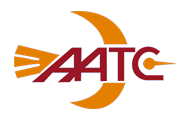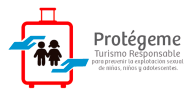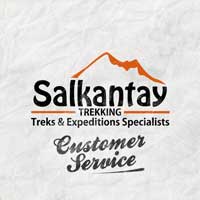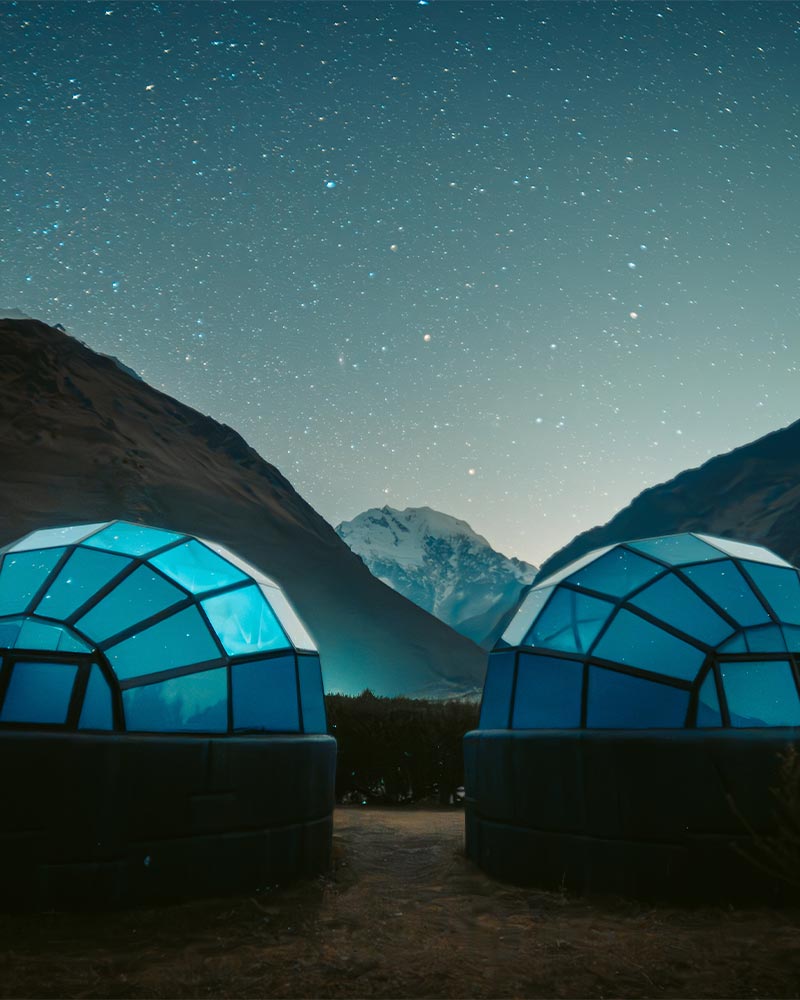The Ultimate Salkantay Trek to Machu Picchu Packing List
Congratulations! You’ve made the exciting decision to join us on the unforgettable Salkantay Trek to Machu Picchu, crossing the impressive Peruvian Andes.
We’re sure you’re filled with excitement to begin this adventure. But first, it’s important to know everything you’ll need along the way.
The Salkantay Trek is considered one of the best alternatives to the famous Inca Trail to get to Machu Picchu, offering an unforgettable experience for nature lovers and those interested in Peruvian culture. That's why we've created the ultimate Salkantay Trek packing list, which will help you prepare for this thrilling outdoor adventure in one of the most impressive regions of South America.
These recommendations are based on the advice of our professional team and our experience on the route. We believe they’ll be very helpful in helping you pack what you need and enjoy an unforgettable adventure in the mountains of Cusco. Below, you’ll find a summary of the essential items, adapted to the season of the year and the conditions of the destination.
Look at our Salkantay Trek to Machu Picchu packing list and prepare for an unforgettable adventure!
Congratulations! You’ve made the exciting decision to join us on the unforgettable Salkantay Trek to Machu Picchu, crossing the impressive Peruvian Andes.
These recommendations are based on the advice of our professional team and our experience on the route. We believe they’ll be very helpful in helping you pack what you need and enjoy an unforgettable adventure in the mountains of Cusco. Below, you’ll find a summary of the essential items, adapted to the season of the year and the conditions of the destination.
The Ultimate Salkantay Trek Packing List
Documents
Original Passport (for entrance to Machu Picchu)
Of course, you will need your passport to enter our country, but it is also a requirement for embarking on your hike. There is an official government checkpoint at the beginning of the trail, responsible for enforcing Peruvian regulations. Remember that all foreign visitors must present their passports before starting the excursion.
Furthermore, if your hike concludes at Machu Picchu, you won't be able to enter the citadel without your passport. Double-check that your passport details match your entry ticket information to avoid inconveniences.
Backpack and Duffle Bag
Backpack
Throughout our treks, a muleteer or a mule will carry your heaviest belongings so you can walk comfortably. This means you’ll need to carry a light daypack with you at all times for the essentials: water, snacks, camera, sunscreen, and more. A 25 to 30-liter backpack is usually enough.
We recommend a backpack with compression straps and lumbar support to reduce the strain of the weight on your back, as well as mesh side pockets for quick access to your water bottle.
It’s important to bring a rain cover for your backpack, as the weather in the Andes is unpredictable and changes frequently. Make sure to get a cover that matches the size of your backpack for a better fit.
Duffle Bag (Included in the Service)
Before starting your trek, you’ll receive a small duffel bag to pack your clothes and other essential items for the journey. You can carry up to 5 kg (11 lb) of weight.
Along the route, our muleteer will carry your duffel bag, along with food and camping equipment. It’s important to keep in mind that you won’t have access to these items until the end of the day when we arrive at our campsite. Pack things you won’t need frequently and always keep your essentials handy.
We’ll give you this bag the day before your trek begins so you can organize everything calmly.
Clothing for Salkantay Trek
Underwear
Choosing the right underwear is crucial for your comfort during hiking. We recommend bringing 4 to 6 pairs of high-quality underwear.
In particular, we recommend wearing sports underwear. These products are specifically designed for high-intensity activities and help manage perspiration during exercise.
Base Layer
The base layer, also known as the first layer, is essential in the higher areas of the Salkantay trek, where temperatures can drop below 0°C (32°F).
The best base layers fit snugly to minimize airflow and retain body heat. They are also made from moisture-wicking materials that allow for better sweat management.
We recommend bringing two upper base layers and one bottom layer for the first two days.
Trekking Shirts
You’ll need between 4 and 7 trekking shirts, depending on the length of your trip. Choose lightweight, breathable, and quick-drying shirts—ideal for staying comfortable during the hike. Technical or synthetic fabrics are the best option, as they’re specifically designed for outdoor activities.
Avoid cotton shirts, as they retain moisture and can leave you feeling cold and uncomfortable. It’s best to bring a combination of short- and long-sleeved shirts to adapt to the different climates you’ll encounter along the route.
Fleece Jacket
The second layer, also known as the mid layer, should be made of fleece or thermal material. It’s essential for retaining body heat in the colder parts of the trek.
A medium-weight fleece jacket is recommended, as it offers an excellent balance between warmth and lightness. This type of clothing is ideal for hiking because it provides good heat retention without being too heavy.
Avoid garments that are too thin to keep you warm or too thick that they make you overheat. Look for a versatile, comfortable, and functional option to adapt to the temperature changes on the Salkantay trek.
Hard Shell Jacket and Rain Gear
Rain is always a possibility when hiking in Peru—especially during the rainy season (October to March). That’s why you should pack a waterproof jacket to protect yourself from both rainfall and cold temperatures.
It’s also advisable to bring a small rain poncho that you can easily wear during light showers. In addition, consider packing waterproof covers for your backpack and electronic devices, as downpours can be intense and unpredictable.
Insulated Jacket
The outer layer is essential on the Salkantay trek, especially in high-altitude areas where temperatures can drop significantly. We recommend bringing a thermal jacket that is lightweight, waterproof, and retains body heat well.
Ideally, it should be compact, easy to pack, and warm enough to also be used in cold urban climates. This garment will be your ally not only during the trek but also on future mountain adventures or the winter season in the city of Cusco.
Trekking Pants and Shorts
For your Salkantay trek, it's essential to bring both long and short pants specifically designed for trekking. A great option is convertible pants, which have zippers that allow you to easily turn them into shorts depending on the weather.
This type of garment not only offers more versatility and comfort on the trail but also helps save space and money.
We recommend packing at least two pairs of long (or convertible) pants and one pair of shorts. This way, you’ll be ready for any weather conditions and can adjust to your preferences along the way.
Pajama Pants
Whether you wear sweatpants or pajama pants, these are recommended for you to unwind in the campsites and get cozy in your bed. It gets chilly at night, so make sure you opt for warm, long pants.
Thermic Gloves
Gloves act as the layer closest to the skin, just like the base layer clothing described earlier. You should bring lightweight, quick-drying gloves, ideally with a fleece interior and a synthetic outer layer.
Headgear for Salkantay Trek
Hat for Sun Protection
You must bring a hiking hat that protects face and neck from the glaring sun. It’s easy to get burnt at high altitudes in just a few minutes.
Your hat should be light and easy to bend/fold so that it can fit into your backpack or rucksack. Trekking hats with a neck cover are great to give you ultimate protection.
Head Band or Beanie
Temperatures can get very cold during the day, especially when reaching the highest altitudes at the mountain passes.
That’s why a warm wool hat or a thermal headband is essential. These accessories will help you retain body heat and protect yourself from the wind in high-altitude areas. Make sure to choose warm and comfortable materials, ideal for the Andean climate.
Neck Gaiter or Balaclava
It’s essential to bring a bandana or balaclava to protect your neck and face from intense cold, especially when temperatures drop below 0 °C (32 °F).
Ideally, bring two types: a thin bandana for daytime hikes and a thicker one for cold nights or high-altitude areas.
“Buff” style bandanas are very versatile, as they can be used in many ways: as a hat, headband, neck warmer, or even a wristband, making them a must-have multifunctional accessory for the trek.
Footwear for Salkantay Trek
Hiking Boots
Hiking boots are essential to successfully complete the Salkantay Trek. To avoid blisters or injuries, make sure they fit well, leaving a bit of room at the toe and with laces that allow for a secure fit.
It’s crucial to break them in before the trip, as wearing new boots during the trek can cause discomfort, pain, or even injuries. Additionally, they should be waterproof and have good traction to handle the varying terrains of the trail—from rocky areas to wet or slippery paths.
Sneakers (Trekking Shoes/Sandals)
After a long day of hiking over rugged terrain, the first thing you'll want to do is slip into a comfortable pair of shoes. We recommend bringing athletic shoes or sandals so your feet can rest after a long day on the trail.
Hiking Socks
For your trek, you’ll need between 5 and 6 pairs of hiking socks, along with 4 or 5 pairs of thin socks or high-absorption liners.
It’s important to choose breathable socks with good moisture-wicking capabilities, as they will help keep your feet dry, prevent blisters, and enhance comfort during long hikes.
Avoid cotton socks, as they retain moisture and can cause irritation or painful chafing. Opt for technical materials specifically designed for multi-day hikes on challenging terrain.
Camping Equipment
Sleeping Bag
It’s essential to bring a warm sleeping bag for the trek, as mountain nights can be very cold, sometimes dropping below 0 °C (32 °F).
If you're looking for a budget-friendly option, choose a synthetic sleeping bag rated for temperatures as low as -10 °C (14 °F). Ideally, it should be mummy-shaped with a hood and drawstring closure to better retain body heat.
*If you don’t have a sleeping bag, Salkantay Trekking offers rental services for this and other camping equipment to ensure you're well-prepared for your hike.
Important Accessories for Salkantay Trek
Trekking Poles
Trekking poles can significantly reduce the impact on your knees and other joints, especially during downhill sections, where the strain on your legs increases.
It’s recommended to choose lightweight poles (around 350 grams per pair) that are adjustable, as they are easy to carry, comfortable to use, and adaptable to various terrains and heights.
If you don’t have trekking poles, don’t worry! At Salkantay Trekking, we offer rental services for this and other camping equipment so you can enjoy your hike in total comfort.
Sunglasses
The intensity of the sun’s rays in Cusco is very high due to the high altitude and the glare from the snow-capped mountain peaks.
We recommend bringing quality sunglasses with UV protection (at least 80% light reduction).
Flashlight or Headlamp
At the campsites, you’ll likely need to use the bathroom in the dark or want to read a bit before sleeping. Additionally, many hikes start very early, even before sunrise. Since local homes and campsites usually have limited lighting, a headlamp will be essential.
Remember to bring spare batteries or a charger if it uses a rechargeable battery. That way, you’ll always be prepared, no matter the time or place.
Water Bottle or Hydration Bladder
Dehydration is very common at high altitudes, so it’s essential to drink between 2 and 3 liters of water per day. Not doing so can cause dizziness, fatigue, and other symptoms that will make the rest of the trek more difficult.
You can bring a regular reusable water bottle or a hydration reservoir (camelback) that fits inside your backpack. What matters most is that it’s durable, easy to fill, and practical to drink from during the hike.
Camera
The landscapes in Cusco are truly spectacular! You’ll want to capture every moment of this unique experience. If you have a lightweight digital camera with good image quality, bring it along. However, it’s not essential—many modern smartphones have excellent cameras that can document your adventure in high resolution.
If you enjoy filming videos or taking landscape photos, make sure to bring the right gear, well protected and with enough storage space. Also, don’t forget to pack extra batteries or a portable charger.
Notebook/Journal & Pen
This isn’t a must but is a great way to chronicle your trek, so you remember every last detail.
Personal Gear and Medication for Salkantay Trek
-
Swimsuit
If you plan to enjoy a relaxing soak in the Cocalmayo hot springs, this item is a must.
-
Trekking Towel
A small or medium-sized trekking towel can be very useful. Microfiber towels dry quickly and take up very little space.
-
Cash
Along the route, there are spots to buy snacks and water. It’s also a great idea to have extra cash (200 soles) in case of an emergency.
-
Toilet Paper
You might need to go to the bathroom during the day. You’ll need toilet paper as most toilets don’t usually provide this.
-
Portable power source
Although there are opportunities to charge devices at our exclusive campsites, bringing a portable power source is a great idea to be able to charge anytime and anywhere.
-
Small Locks
To protect your belongings in your rucksack or duffle bag.
-
Waterproof Ziplock Bags
These come in handy for storing important/valuable items like your money, passport, and electrical equipment
-
Isotonic Powder
Can be used to flavor your water and helps replace electrolytes, improving energy levels and aiding water absorption.
-
Diamox
Acetazolamide, or altitude sickness medication, can be used as a preventive measure. It is important to note that it does not cure altitude sickness and should not be relied upon as a solution for extreme altitudes. However, it can help mitigate its effects, which is why it is popular among climbers and hikers.
-
General Medications
We recommend taking paracetamol or aspirin for headaches (a common altitude sickness symptom on the Salkantay Trek) and Immodium for diarrhea.
-
Basic First Aid Kit
If you join a trek organized by Salkantay Trekking, your guide will carry a first aid kit. However, if you are hiking without support or independently, then a first aid kit is a must.
-
Sunscreen/Lip balm
No one wants burnt skin or cracked lips. Be sure to bring 1 x sunscreen (SPF 50+), and 1 x lip balm.
-
Bug Spray/Repellent
As you get closer and closer to Machu Picchu, you’ll come across more bugs that like to bite! You’ll need this to keep them away.
-
Baby Wipes/Body Wipes
For quick and easy wet washes when no showers are in sight! Bring 1 x baby wipes or body wipes.
-
Blister Plasters
The dreaded blisters! We recommend taking Compeed blister plasters
-
Hand Sanitizer
Great for disinfecting hands before and after eating or when they get dirty during the hike.
What to Pack in Your Backpack?
We’ve already mentioned the importance of having a lightweight, quality backpack to carry the necessities in during the day. However, you might still wonder what needs to go in there and what to put in your duffle bag. Fear not! We’ve compiled a checklist of everything that needs to go in your daypack.
- Rain jacket/poncho
- Fleece
- Sunhat/beanie
- Water bottle
- Bug spray
- Sunscreen
- Personal medication
- Toilet paper
- Cash
- Passport
- Camera
Find the Perfect Destination in Peru
With astonishingly varied landscapes, stunning scenery, compelling history, and a legacy of fascinating cultures, there is truly something for everyone. Our expeditions in Peru are designed to showcase all that this country has to offer.
Our expeditions in Peru are designed to showcase all that this country has to offer.












